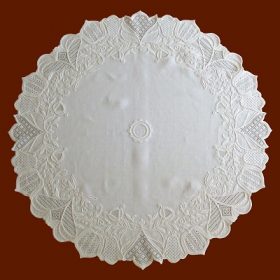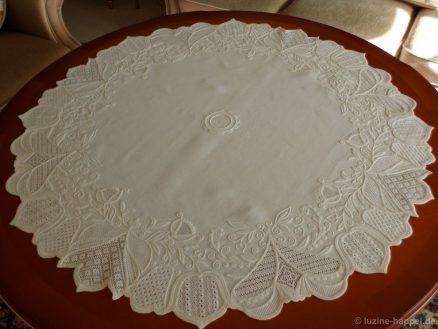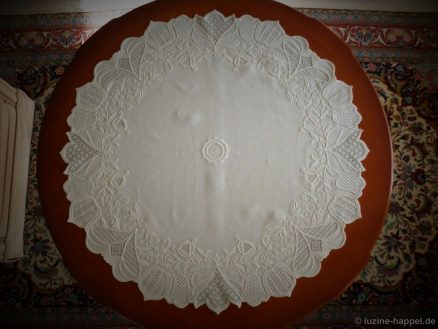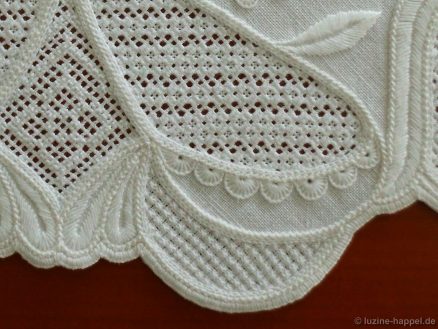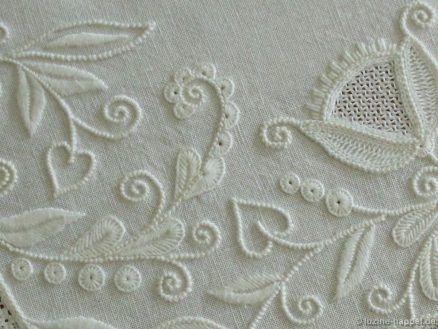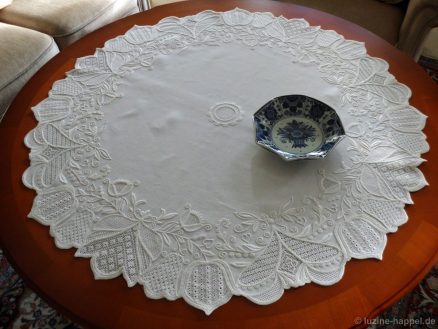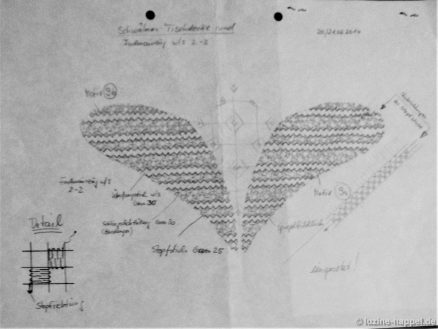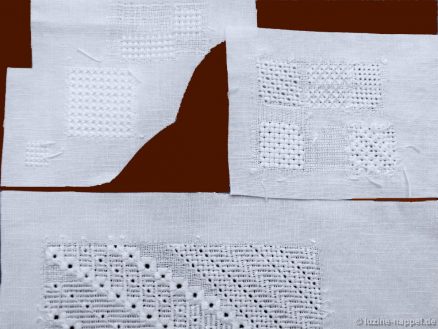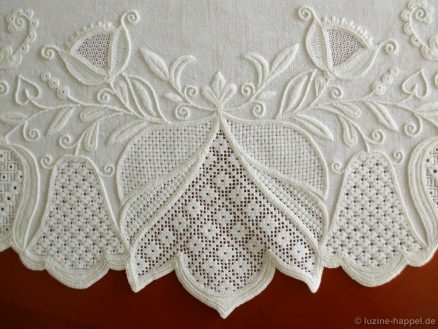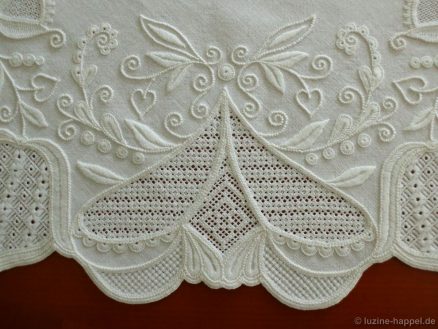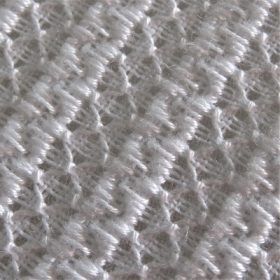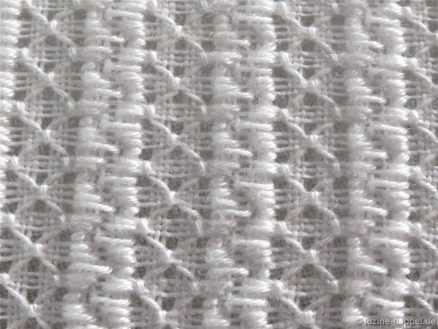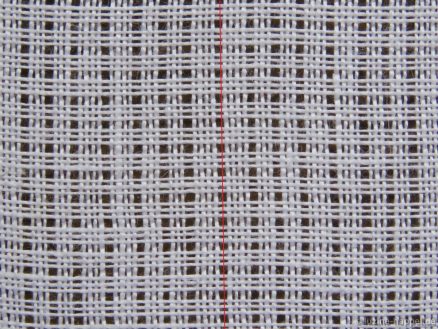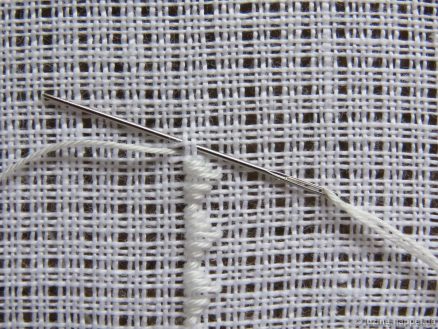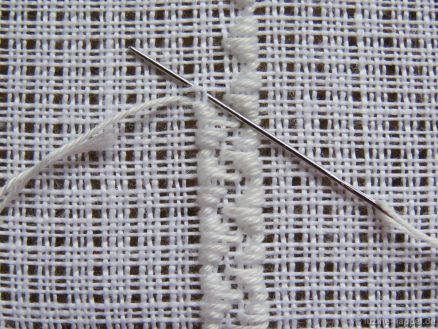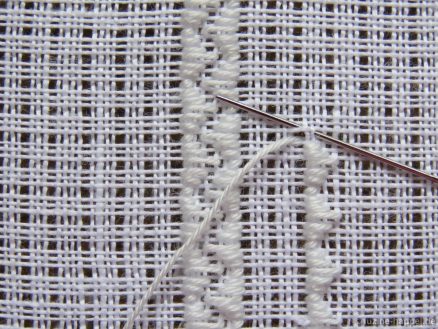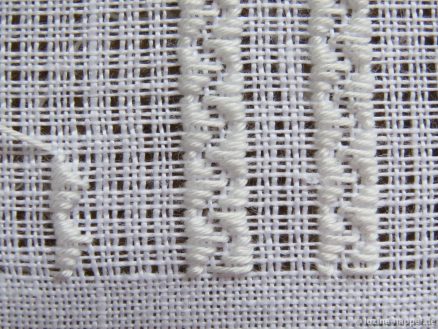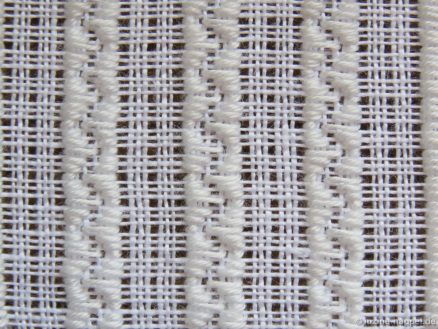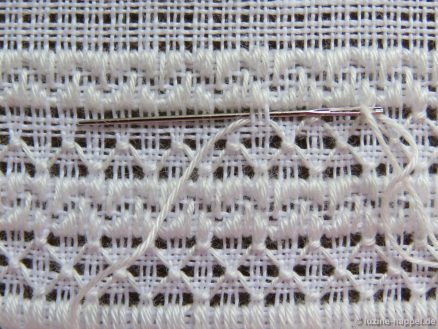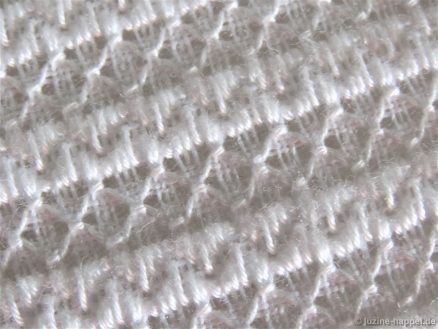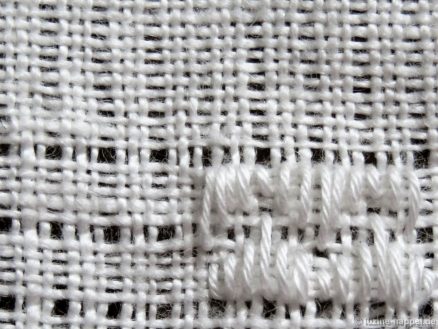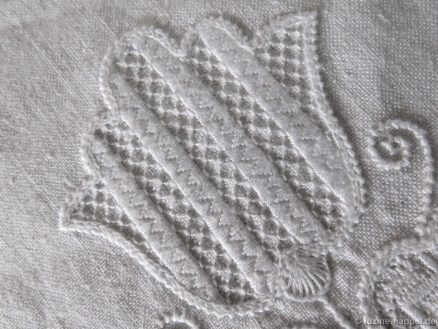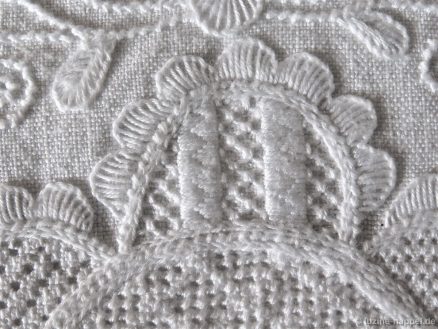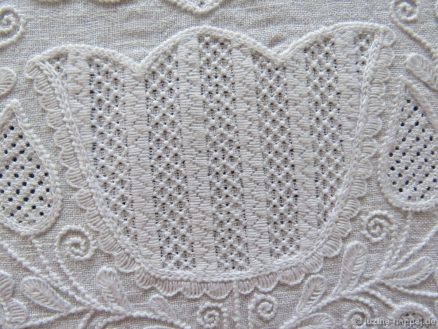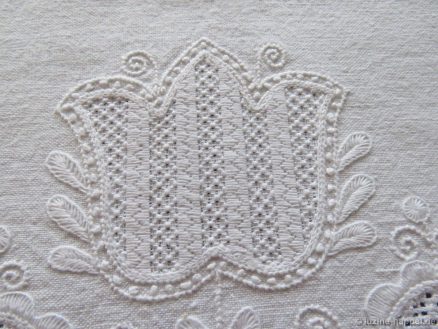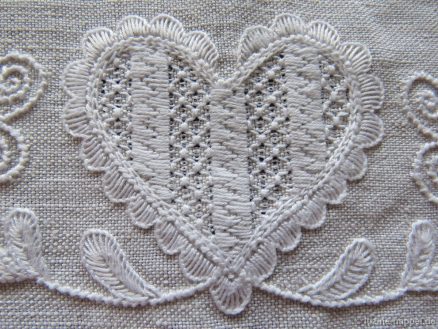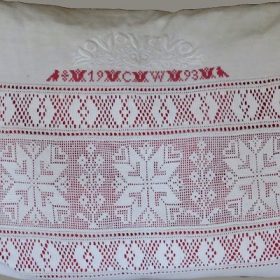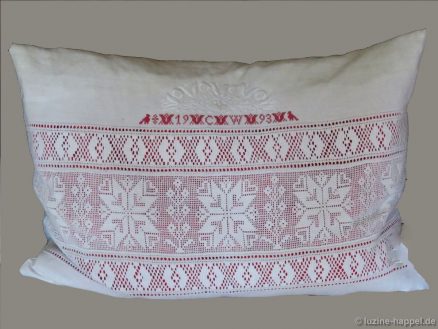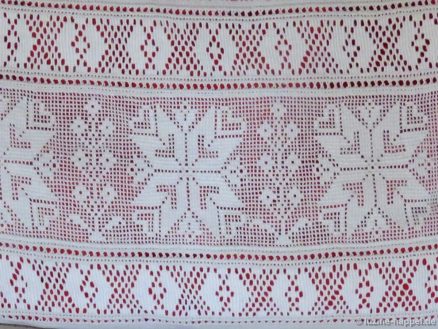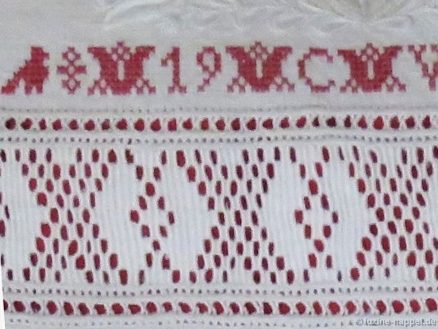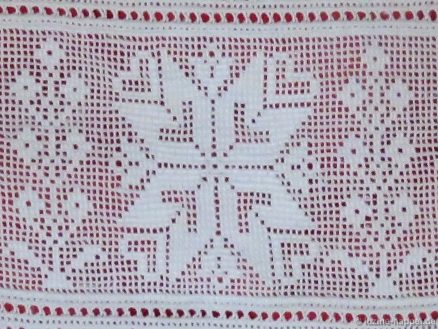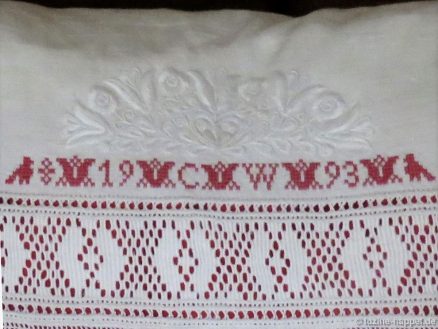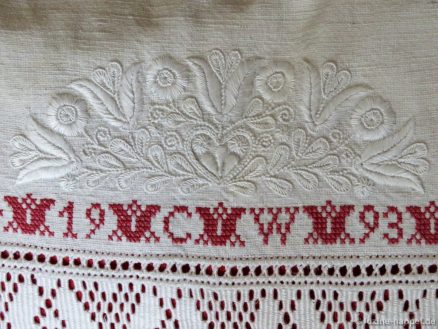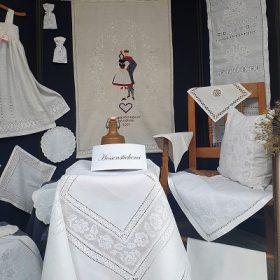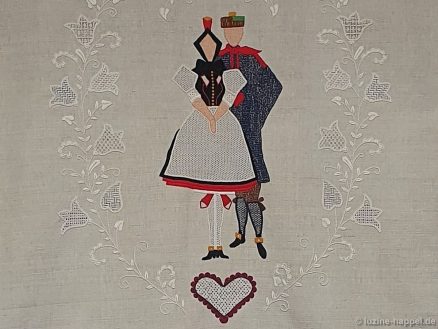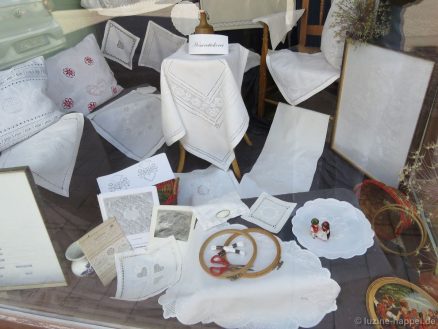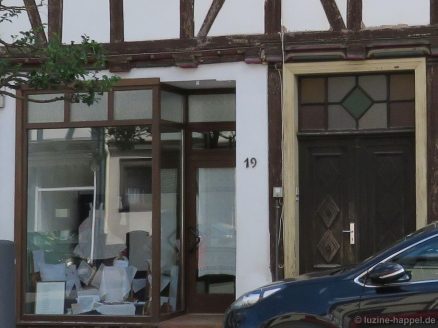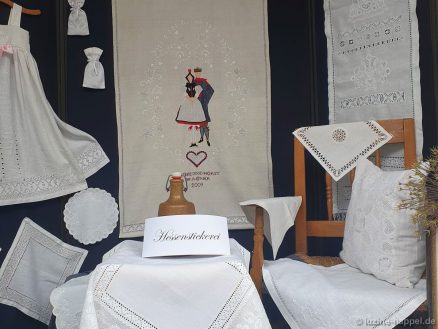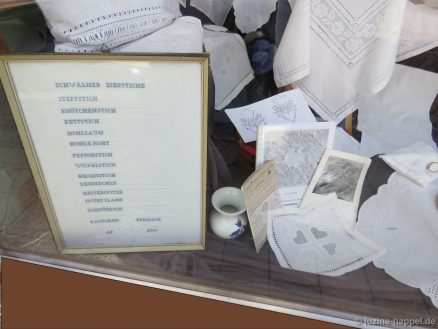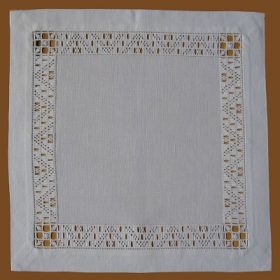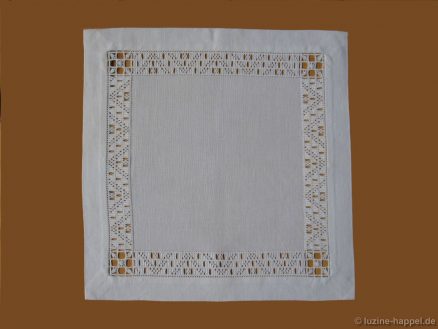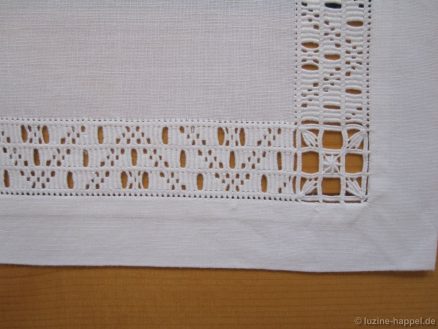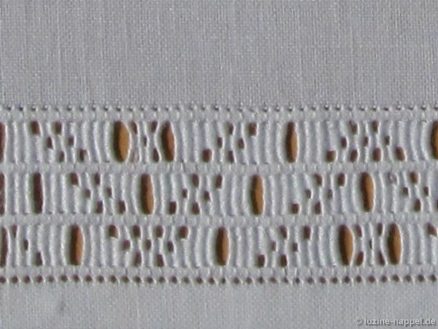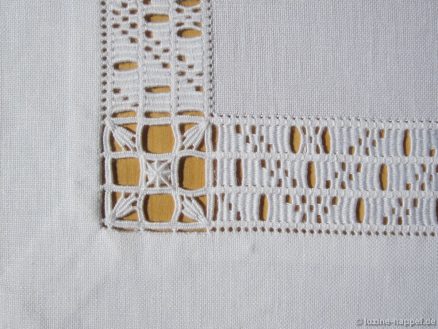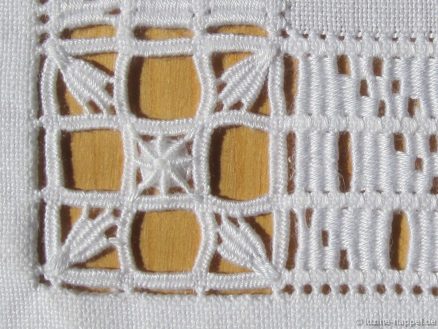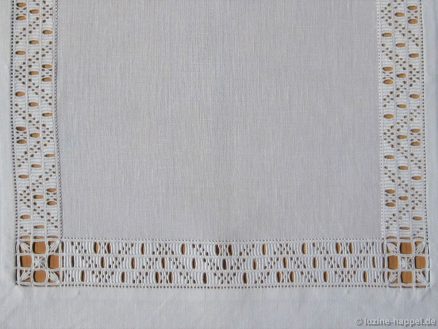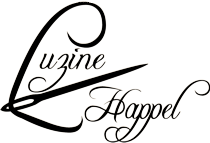Today I can present an excellent masterpiece of Schwalm embroidery – modern and yet timeless.
Many years ago, when I saw Maria Deistler’s “Schwalm Circle” design for the first time, I was immediately impressed by the beauty and uniqueness of the pattern.
Only at second glance did it become apparent that the design would not be easy to embroider. Of course, you could simply work any pattern into the large areas in the style of many “old” Schwalm women. But that would take away a lot of the elegance of the design.
In the meantime I have been able to admire a few examples embroidered according to this drawing. brubi from Germany – an embroiderer who wants to remain anonymous – achieved the absolute crowning glory with her embroidery.
She went to the trouble of determining the inclination of the areas and looked for suitable filling patterns. It was very time-consuming to test thread withdrawings and pattern runs on test pieces. But the effort was worth it.
It was also worth the fact that she washed the linen first to end up with a really round tablecloth – even if it certainly made withdrawing the threads a lot more difficult.
Perfectly matching filling patterns were found for each area. The interplay of the patterns is excellent. The combination of dense and light patterns to achieve the contrasts is impressive.
The striking outlines created by using No. 12 embroidery thread and the choice of macrame stitches in some areas ensure a balanced overall picture. I also think the choice of the other thread weight is correct.
Eyelets and tendrils are embroidered with perfect precision. The decoration of the leaves – sometimes completely filled, sometimes only partially or not at all, as with the little hearts – is harmonious.
I don’t like to use this word in connection with embroidery, but here I have to use it: brubis tablecloth is a “dream”!
Started in September 2009, she completed her Schwalm tablecloth on 16.11.2014.
See and read for yourself:
“I removed some filling patterns and embroidered other patterns. After all, it is my very first work in Schwalm embroidery, so I had to do some digging to see if I liked a fill pattern or not.
Some versions of my embroidery do not correspond to the original Schwalm embroidery technique. But I thought to myself, the design is very modern, so I can be a little more flexible in my stitches.
The tablecloth has a diameter of about 100 cm (the original has a diameter of only 75 cm).
To ensure that the tablecloth remains exactly round (it lies almost completely on a round table), I washed the fabric at a temperature of over 60C, contrary to the rule, before drawing and embroidering, then lightly starchend and ironed it carefully.
For the size of the flower motifs, the typical Schwalm Coral Knot stitch seemed too puny to me, so I embroidered all the motif outlines in Macrame stitch, which looks more bold.
In the case of the filling patterns, I browsed through my books for days, also designed my own filling pattern combinations, as I found it suitable and harmonious.
First, I drafted the individual filling patterns, including the outlines, on paper to determine whether the filling pattern is suitable for this motif. Then I embroidered sample pieces on the edge of the fabric to see what thread weight this pattern looks best with.
Of course, pulling out the threads was no longer so easy due to the compaction of the fabric after washing, but my husband built me a little help according to my instructions – he provided a tapestry needle No. 26 that had become unusable for embroidery with a handle (similar to an awl). This allowed me to lift each individual thread well and remove it from the fabric piece by piece without getting a cramp in my hand.
All in all, however, the whole thing was a mammoth task that I had set out to do. My ambition didn’t always make it easy for me, and I often fell into bed late at night with cramped, aching limbs and half-blind eyes because I really wanted to finish embroidering a filling pattern.
But all the hardships were forgotten when the tablecloth was finished.
When I started with my Schwalm tablecloth, I was already 63 years old, so my fine motor skills and eyesight had already suffered a bit when embroidering despite adapted glasses and magnifying glass. When the project was finished, I was 68 years old.”
Please look forward to the next blog post with many more interesting details about this stunning project:
Schwalm Tablecloth – round (2)
Schwalm Tablecloth – round (3)
